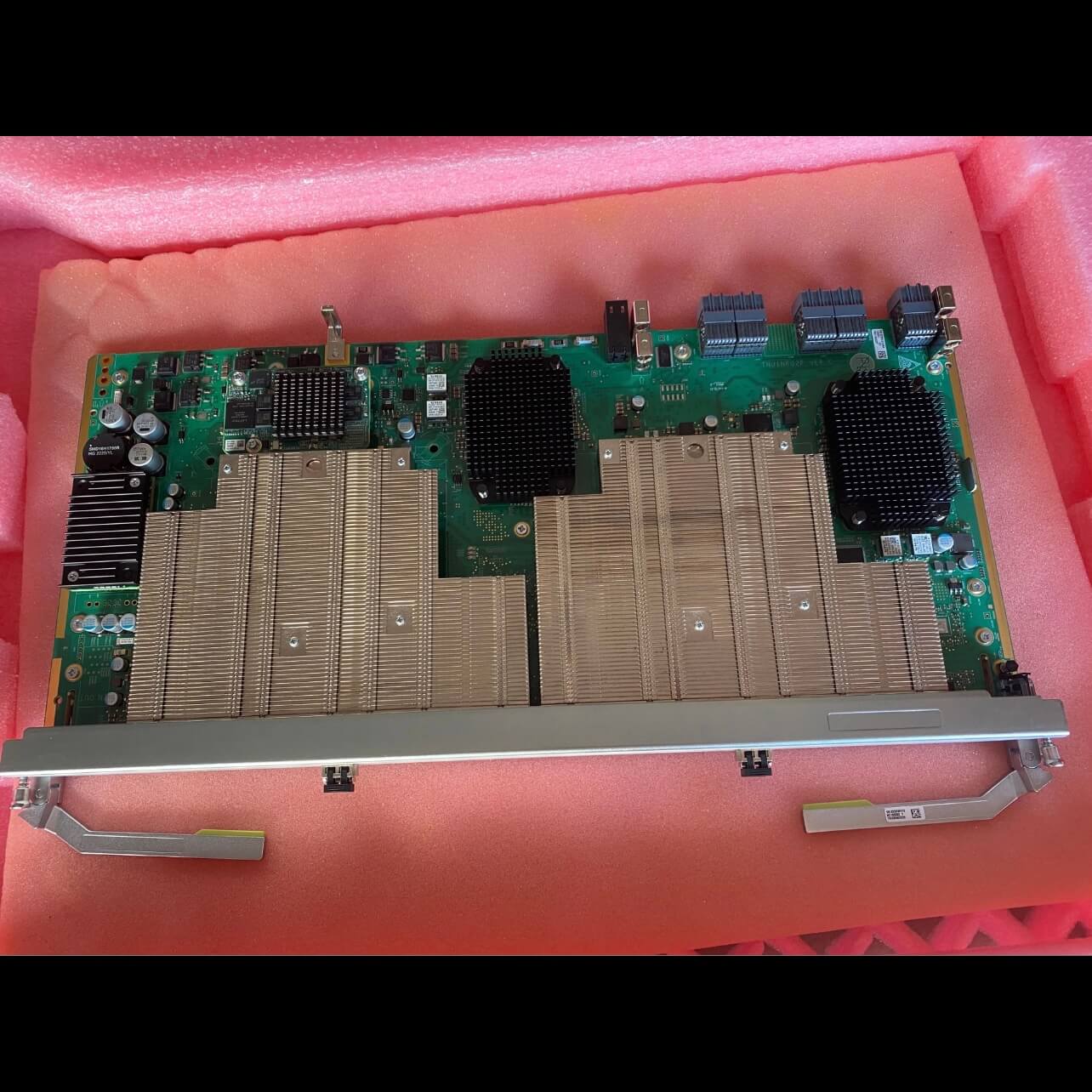Link You To Professional Networks

TNS2N501 Is Huawei OptiX OSN 9800 Programable Hybrid Line Service Processing Board

Huawei OptiX OSN 9800 Programable Hybrid Line Service Processing Board TNS2N501 Overview
TNS2N501: 1*200G/100G Programable Hybrid Line Service Processing Board
The N501 board is a hybrid line board and supports a mixture of OTN and SDH services. The N501 board processes and converts the received service signals into one OTU4/OTUC2 signal. The OTU4/OTUC2 signals are carried over ITU-T G.694.1-compliant DWDM wavelengths. The N501 board uses coherent receiving technologies and applies to coherent systems.
The N501 board consists of an OTN processing module, VC cross-connect module, SDH processing module, WDM-side optical module, control and communication module, and power supply module.
The transmit and receive directions are defined in the signal flow of the N501 board. The transmit direction is defined as the direction from the backplane to the WDM side of the board, and the receive direction is defined as the reverse direction.
The following describes the signal flow in the transmit direction along with the module functions.
VC-4 signals and ODUk signals can be cross-connected through the backplane.
The VC-4 signals are received by the VC cross-connect module and sent to the SDH processing module for STM-N framing and OTN overhead processing. The generated STM-N signals are sent to the OTN processing module.
The ODUk signals are received by the ODUk cross-connect module and directly sent to the OTN processing module.
The OTN processing module maps the STM-N signals to the payload of appropriate ODUk signals, performs OTN framing and FEC encoding of the signals, and then produces and sends one OTU4/OTUC2 electrical signal to the WDM-side optical module.
The WDM-side optical module receives the OTU4/OTUC2 electrical signal from the OTN processing module, performs E/O conversion, and sends out one OTU4/OTUC2 optical signal over an ITU-T G.694.1-compliant wavelength through the OUT port.
Functions and Features of the TNS2N501 Board
|
Function and Feature |
Description |
|
Backplane capacity |
The total backplane bandwidth is 200 Gbit/s. |
|
WDM specification |
Supports the DWDM specifications. |
|
Tunable wavelength |
Supports tunable wavelengths of WDM-side optical signals in Super C band (1524 nm to 1573 nm). |
|
FEC coding |
100G line mode:
200G line mode:
|
|
Line modulation format |
100G mode:
200G mode:
|
|
Typical channel spacing |
|
|
OTN overhead protocol |
Supports the OTN frame format and overhead processing defined by ITU-T G.709. |
|
OTN overhead |
100G line mode:
200G line mode:
NOTE: OSU supported through the OSU cross-connect extended board. |
|
OSU |
Supported NOTE:
|
|
Intra-board 1+1 protection |
Supported NOTE: Supports intra-board 1+1 protection when working with optical protection boards. |
|
ODUk SNCP |
Supported |
|
OSUflex SNCP |
Supported NOTE: OSU supported through the OSU cross-connect extended board. |
|
Tributary SNCP |
Supported |
|
Electrical-layer ASON |
Supported |
|
Optical-layer ASON |
Supported NOTE:
|
|
Physical clock |
Supported NOTE: When the ODU cross-connect granularity of an OTN line port is set to the maximum granularity supported by the port, physical clock synchronization is not supported. The physical clock can be used only after lower-order ODU cross-connections are configured. |
|
IEEE 1588v2 |
Not supported |
|
ITU-T G.8275.1 |
Not supported |
|
ITU-T G.8273.2 |
Not supported |
|
Outband DCN |
Supports communication over ESCs. |
|
Test frame |
Not supported |
|
PRBS |
Supports the PRBS function on the WDM side. |
|
Latency measurement |
NOTE:
|
|
Channel loopback |
100G line mode:
200G line mode:
NOTE:
|
|
Port loopback |
Supports WDM Side Loopback |
|
Alarm and performance event monitoring |
|


